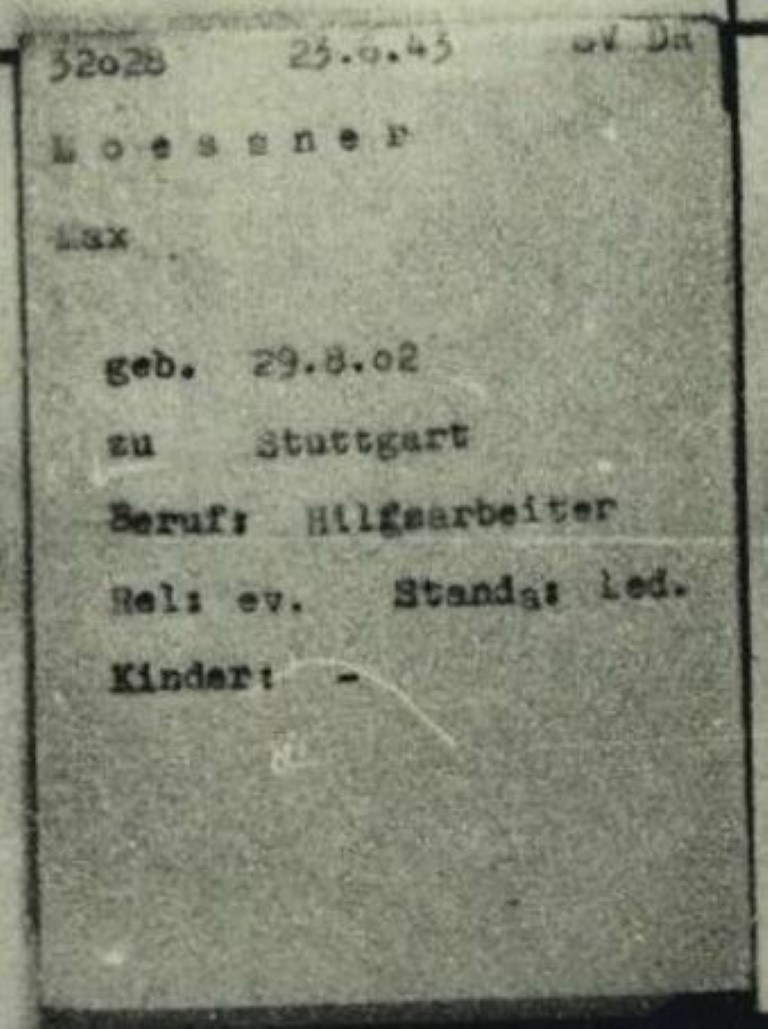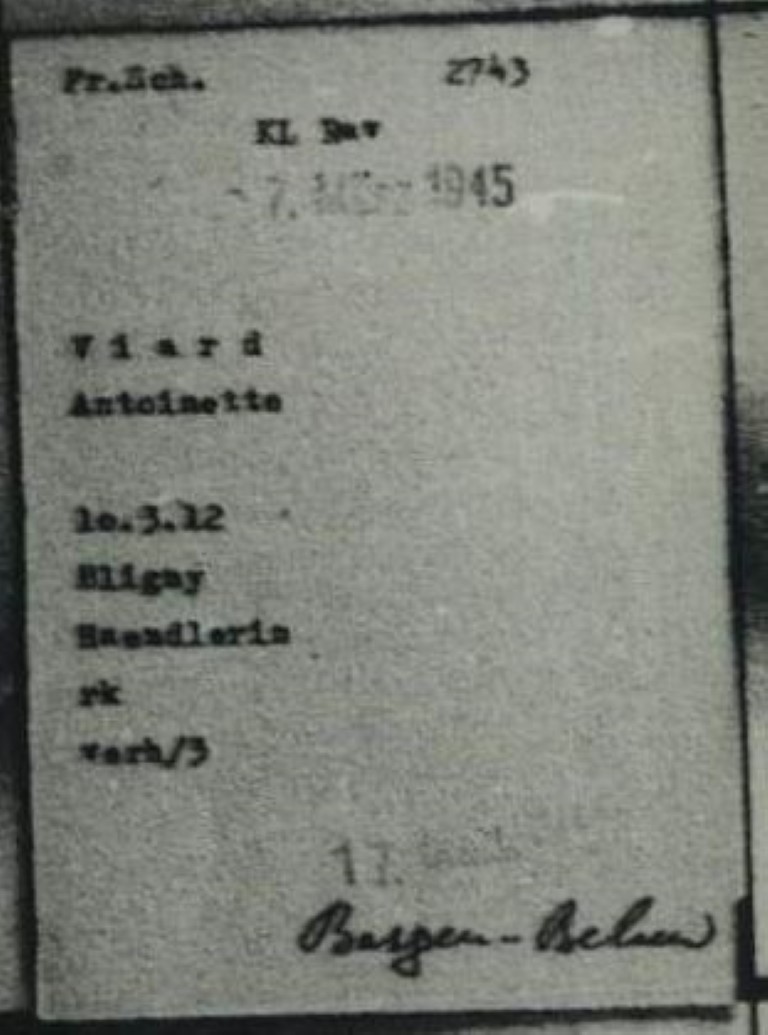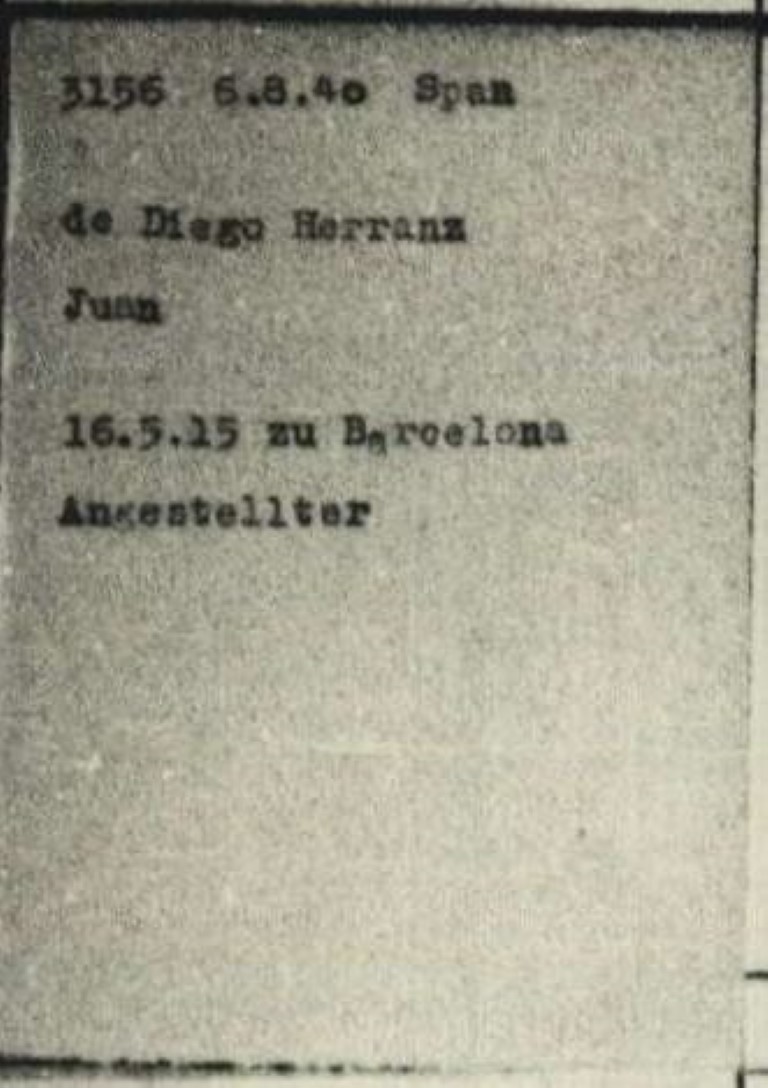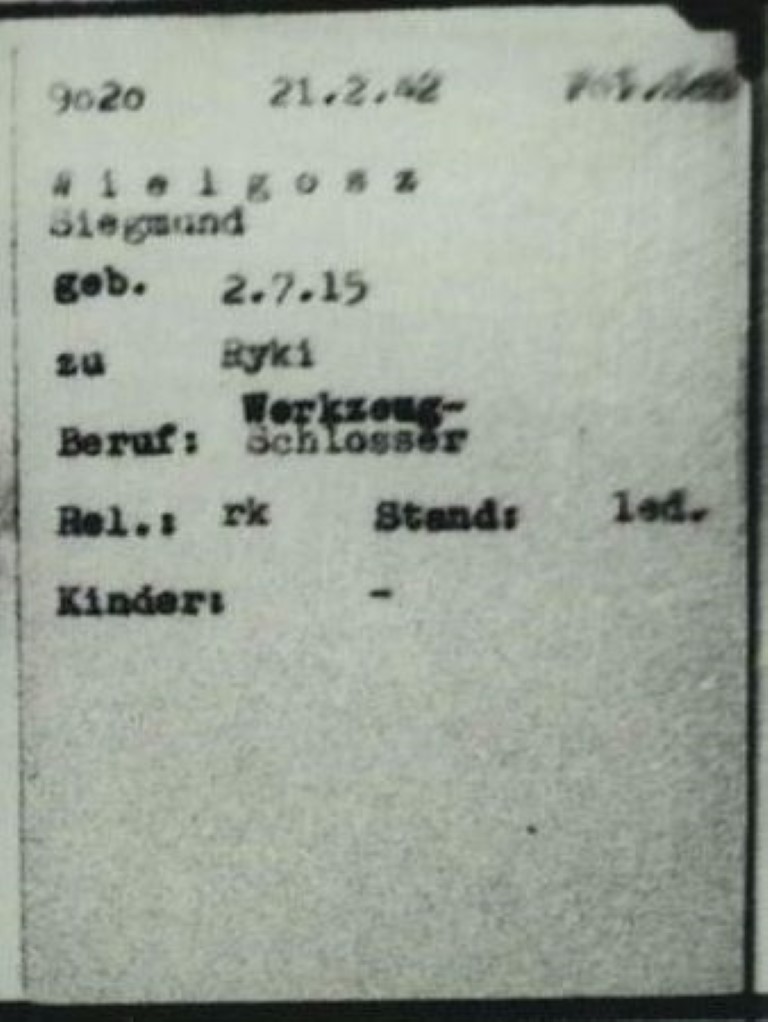Page of
Page/
- Reference
- Intro


This document is a registry office card from Mauthausen concentration camp. The individual cards from this card file are almost identical. Only the cards for female prisoners vary a little, as the categories (such as profession or religion) are not listed. Instead, the information was directly entered in a certain order, but without the categories. Prisoner clerks filled out the registry office cards on typewriters; very few of them include handwritten comments.
This document is a registry office card from Mauthausen concentration camp. The individual cards from this card file are almost identical. Only the cards for female prisoners vary a little, as the categories (such as profession or religion) are not listed. Instead, the information was directly entered in a certain order, but without the categories. Prisoner clerks filled out the registry office cards on typewriters; very few of them include handwritten comments.
Questions and answers
-
Where was the document used and who created it?
After newcomers had walked the seven kilometers from the train station to Mauthausen concentration camp, they passed through various offices to be registered. The most important information about the prisoners was recorded not only by the Political Department, the labor assignment office and the sick bay, but also by the registry office, which kept its own card file.
Prisoner clerks managed the registry office card file for male and female prisoners of Mauthausen concentration camp and the sub-camps administered by it. They recorded all important information about the prisoners on paper cards following a defined template.
- When was the document used?
Registry office cards were probably used in Mauthausen from 1941 at the latest. They continued to be used there until the liberation in 1945. For example, a registry office card was created for Roszi Einhorn, a Jewish woman from Hungary, when she arrived from the Mittelbau-Dora concentration camp on April 5, 1945, just four weeks before the liberation of Mauthausen.
- What was the document used for?
Registry office cards were needed for generating statistics about the prisoners in each concentration camp. One of the responsibilities of the registry office was to produce reports on the total number of prisoners (strength report) and on individual prisoner groups. Instructions issued to the camp clerk of Mauthausen in 1941 show how important this card file was. Regarding the “review or modification of the card file,” these instructions stated: “This is some of the most important work, because the card file is the basis of the smooth and orderly handling of all questions, queries and findings. It must be kept up to date through intensive, detailed work.” (Mauthausen Memorial Archive, F/17/01, p. 1)
One special aspect of the registry office cards from Mauthausen is that they do not indicate the camp from which a prisoner had been transferred, or which block he or she was assigned to in Mauthausen or one of its sub-camps. Furthermore, no labor details were listed, as they were in Buchenwald, and, in general, no transfers to other camps were noted either, as they were on the registry office cards from Dachau concentration camp. Instead, the prisoner clerks in Mauthausen recorded this information in various arrivals books (Zugangsbücher), which were kept in the Political Department and in the post office, among other places. There was also a detailed block card file in Mauthausen which held cards that noted the prisoners’ block numbers and sometimes other information. There were some exceptions, because a few registry office cards actually mention the prisoner’s function in the camp. In general, however, the prisoner clerks made very few handwritten additions or updates to the registry office cards of male prisoners in Mauthausen.
The situation was different for the registry office cards of female prisoners. Women did not enter the Mauthausen concentration camp system until the last years of the war. Starting primarily in September 1944, they were assigned to sub-camps formerly administered by Ravensbrück, where they were forced to work in armaments production. Most female prisoners did not arrive at the already severely overcrowded main camp until after the evacuations and death marches from other camps such as Ravensbrück, Auschwitz, Gross-Rosen and the former sub-camps of Flossenbürg. It is important to note that while around 10,000 women passed through Mauthausen and its sub-camps, by far not all of them were registered. Many transports were not registered at all, especially if the women were deported again after a short period of time. Today the Arolsen Archives hold around 3,000 registry office cards for female prisoners. These are similar in structure to the men’s cards that had already been kept in the registry office of Mauthausen. However, the women’s cards are missing the labeled sections before their personal details. Instead, this information was typed in directly. On some cards for female prisoners, there are individual handwritten notes about transfers to Bergen-Belsen, for example. There are also cards for female prisoners with the handwritten abbreviation Entl. for Entlassung (“release”). Smaller and larger numbers of prisoners were, in fact, released even shortly before the end of the war. In April 1945, for example, 750 women and 600 men were released as part of a relief campaign carried out by the International Committee of the Red Cross. The abbreviation Entl. was therefore written before the liberation of Mauthausen.
- How common is the document?
In the Archives of the Auschwitz-Birkenau State Museum, there are a total of around 60,000 original registry office cards from Mauthausen concentration camp. Since there were nearly 190,000 prisoners in Mauthausen and its sub-camps, registry office cards have not been preserved for all prisoners. Spot checks indicate that most of the preserved cards are for the 65,000 prisoners who were liberated in Mauthausen in May 1945. No cards have yet been found for the prisoners who had previously died in the camp. Around 3,000 cards for female prisoners have been preserved. All of the cards in the Arolsen Archives are copies or re-enlargements of microfilm prints.
- What should be considered when working with the document?
Unlike the Prisoner Registration Cards, for example, the registry office cards do not indicate the camp in which they were issued. In these cases, the collection number assigned to the document can be of help. The registry office cards from Mauthausen concentration camp can be identified by the shelf mark 1.1.26.
Looking at the registry office cards, it would appear that registration was an orderly process in the concentration camps. But particularly when large mass transports arrived, people would be admitted to the camp hastily while being beaten and abused. In general, the SS and the Gestapo used the arrivals procedure as a demonstration of their own strength. For this reason, many prisoners recall insults, violence and harassment during registration.
If you have any additional information about this document or any other documents described in the e-Guide, we would appreciate it very much if you could send your feedback to eguide@arolsen-archives.org. The document descriptions are updated regularly – and the best way for us to do this is by incorporating the knowledge you share with us.
Help for documents
About the scan of this document <br> Markings on scan <br> Questions and answers about the document <br> More sample cards <br> Variants of the document


